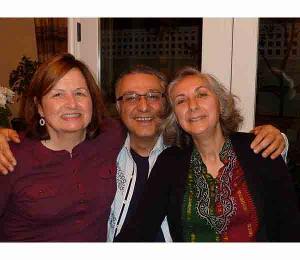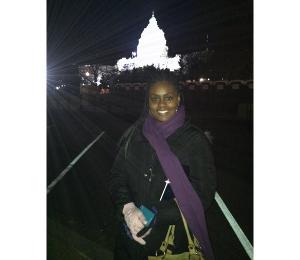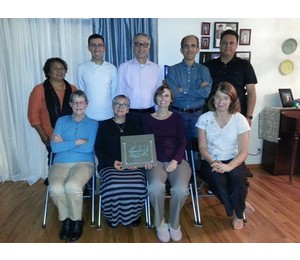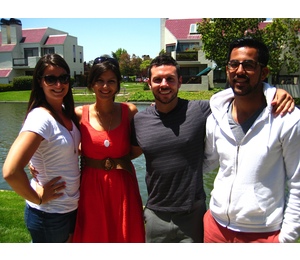Don’t miss this remarkable event!
Where: Stanford Campus in Palo Alto at Jordan Hall, Building 420, Room 40
When: 6:30pm, Thursday April 9th 2015
Who: Dr. Soli Shahvar
Topic: “Modernity, the Baha’i Fatih and the Question of Modern Education in Late Qajar and Early Pahlavi Iran”
Background
A network of highly advanced educational institutions flourished for three decades in early 20th century Iran. Attending a conference in Jerusalem in December of 2000, Dr. Soli Shahvar, a professor of Middle Eastern History at the University of Haifa noticed that “…the overwhelming majority of academically authored books and articles have failed to even acknowledge the fact that there were any Baha’i schools in Iran, let alone to study them.” Born in Iran, Dr. Shahvar was familiar with the Baha’i Faith, though not a Baha’i himself. Thanks to a generous research grant from the Ezri Center for Iran and Persian Gulf Studies, he was able to devote the necessary time to the painstaking and meticulous research necessary to uncover the facts about this remarkable network of Baha’i Schools that had existed a century ago. 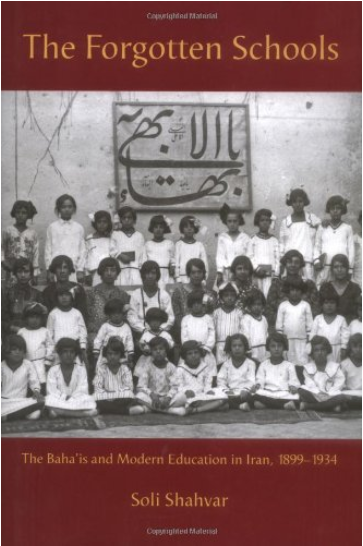 The result was an important book: “The Forgotten Schools, The Baha’is and Modern Education in Iran 1899-1934″. He explained that the title of the book can be attributed to the fact that the existence of these schools “…has been invisible not only in Iranian official publications, but also in almost all the studies written by non-Baha’is, leaving only a limited number of short studies and memoirs written by Baha’is to record their existence.”
The result was an important book: “The Forgotten Schools, The Baha’is and Modern Education in Iran 1899-1934″. He explained that the title of the book can be attributed to the fact that the existence of these schools “…has been invisible not only in Iranian official publications, but also in almost all the studies written by non-Baha’is, leaving only a limited number of short studies and memoirs written by Baha’is to record their existence.”
Thanks to Dr. Shahvar’s research, the facts about these these “Tarbiyat Schools”, have been brought to light in a way that no impartial observer can deny. His research is impeccable. The book includes 190 pages of notes and references supporting his amazing findings together with an Appendix of over 30 pages which includes a parial list of prominent Non-Baha’i Iranians who studied at the Tarbiyat Schools in Tehran.
Presentation at Stanford – this Thursday, April 9th
Dr Shahvar will be giving a talk on this subject this Thursday, April 9 2015 on the Stanford Campus in Palo Alto at Jordan Hall, Building 420, Room 40. The event is free and open to the public.
A few quotes from Dr. Shahvar’s book are included below:
“…the fact remains that it was solely the excellent reputation of the Baha’i schools, and the high level of education they offered, that gradually encouraged many non-Baha’is to send their children to attend them.” -p. 93
“The students who studied at the Baha’i Schools were considered quite privileged, for they usually received more or less the highest level and standard of education available at the time in Iran. This was in line with Baha’i teachings on excellence, especially in education.” -p. 80
“In contrast to the schools of other religious minorities in Iran, such as the Jewish and Armenian schools, whose student body was drawn almost exclusively from their own communities, the Baha’i schools …were also attended by children from the majority Muslim and other minority religious communities.” -p.93
“Unlike the schools of other religious minorities in Iran, the Baha’i schools did not include in their curriculum any religious studies; religion was taught separately…” -from the Preface
“Based on the available information it is also clear that it was not love of the Baha’is, but rather a strong regard for the high standards of the Baha’i educational institutions, that attracted a number of aristocratic, influential and important non-Baha’i families to send their children to study at these schools.” -p.96
“Resentment towards the Baha’i schools was aroused not only because of the fact that they were Baha’i owned, but also because they promoted education for girls.” -p.103


